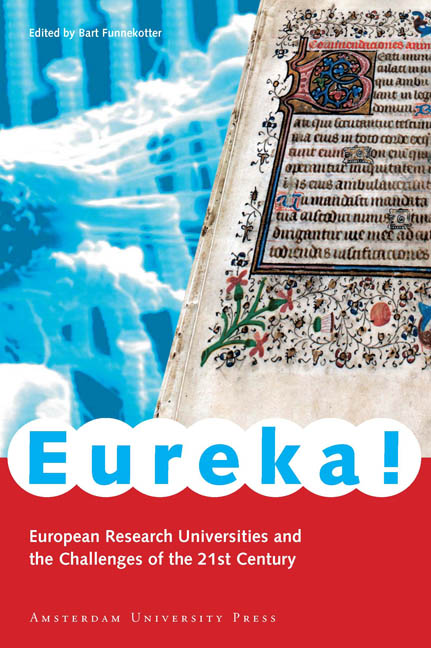Book contents
- Frontmatter
- Contents
- Foreword
- Introduction: Challenges of the Twenty-first Century
- Cambridge: Cambridge University
- Edinburgh: University of Edinburg
- Geneva: Université de Genève
- Heidelberg: Ruprecht-Karls-Universität
- Helsinki: Helsingin Yliopisto
- Leiden: Universiteit Leiden
- Louvain: Katholieke Universiteit Leuven
- Milan: Università Degli Studi Di Milano
- Munich: Ludwig-Maximilians-Universität
- Oxford: Oxford University
- Stockholm: Karolinska Institutet
- Strasbourg: Université Louis Pasteur
Munich: Ludwig-Maximilians-Universität
Published online by Cambridge University Press: 23 January 2021
- Frontmatter
- Contents
- Foreword
- Introduction: Challenges of the Twenty-first Century
- Cambridge: Cambridge University
- Edinburgh: University of Edinburg
- Geneva: Université de Genève
- Heidelberg: Ruprecht-Karls-Universität
- Helsinki: Helsingin Yliopisto
- Leiden: Universiteit Leiden
- Louvain: Katholieke Universiteit Leuven
- Milan: Università Degli Studi Di Milano
- Munich: Ludwig-Maximilians-Universität
- Oxford: Oxford University
- Stockholm: Karolinska Institutet
- Strasbourg: Université Louis Pasteur
Summary
Ludwig-Maximilians-Universität in facts and figures:
Founded in 1472
46,876 students
6,301 staff, excluding staff of teaching hospital
Budget € 305.9 million
Everything about Ludwig-Maximilians-Universität in Munich is big. Its main building, a nineteenth-century Neo-Renaissance construction, is not situated on a square but surrounds an entire square by itself. An army of small children could spend an afternoon paddling in the fountain in front of the entrance; inside, the cavernous entry hall, clad in stately marble, feels almost like an empty swimming pool. The university is Germany's second largest after Cologne; it has three times as many students as the Netherlands’Leiden University. And LMU's reputation is just as impressive as its size: among the 92 universities in the country it is ranked second.
The colossal building on the Geschwister-Scholl-Platz may look like it has stood there forever, but appearances are deceiving. Founded in 1472 in Ingolstadt by Duke Ludwig the Wealthy, the university was originally known as the University of Ingolstadt. It has withstood periods of reformation, plague and war. The Enlightenment saw the establishment of a scientific approach to learning, and after two state-sanctioned relocations, to Landshut in 1800 and to Munich in 1826, its reputation was firmly established. It assumed its present name around the same time. During the nineteenth century it was home to a number of famous scientists, of whom Wilhelm Röntgen is perhaps the best known today.
National Socialism ushered in a period in which freedom in research was severely curtailed. Uncooperative scientists were fired and books burned. However, during the war a group of students and a professor formed a resistance group by the name of ‘White Rose’; the members of the group, brother and sister Hans and Sophie Scholl among others, paid for the distribution of its pamphlets with their lives. The main building suffered bombing in 1944, but in the years after the war the Bavarian state assisted with its reconstruction. The university has continued to grow since then.
These days the university is going through a period of reform. Education and research are being evaluated and renewed in order to strengthen the Bildung, or scholastic development, that transforms young students into academics.
- Type
- Chapter
- Information
- Eureka!European Research Universities and the Challenges of the 21st Century, pp. 115 - 126Publisher: Amsterdam University PressPrint publication year: 2005

